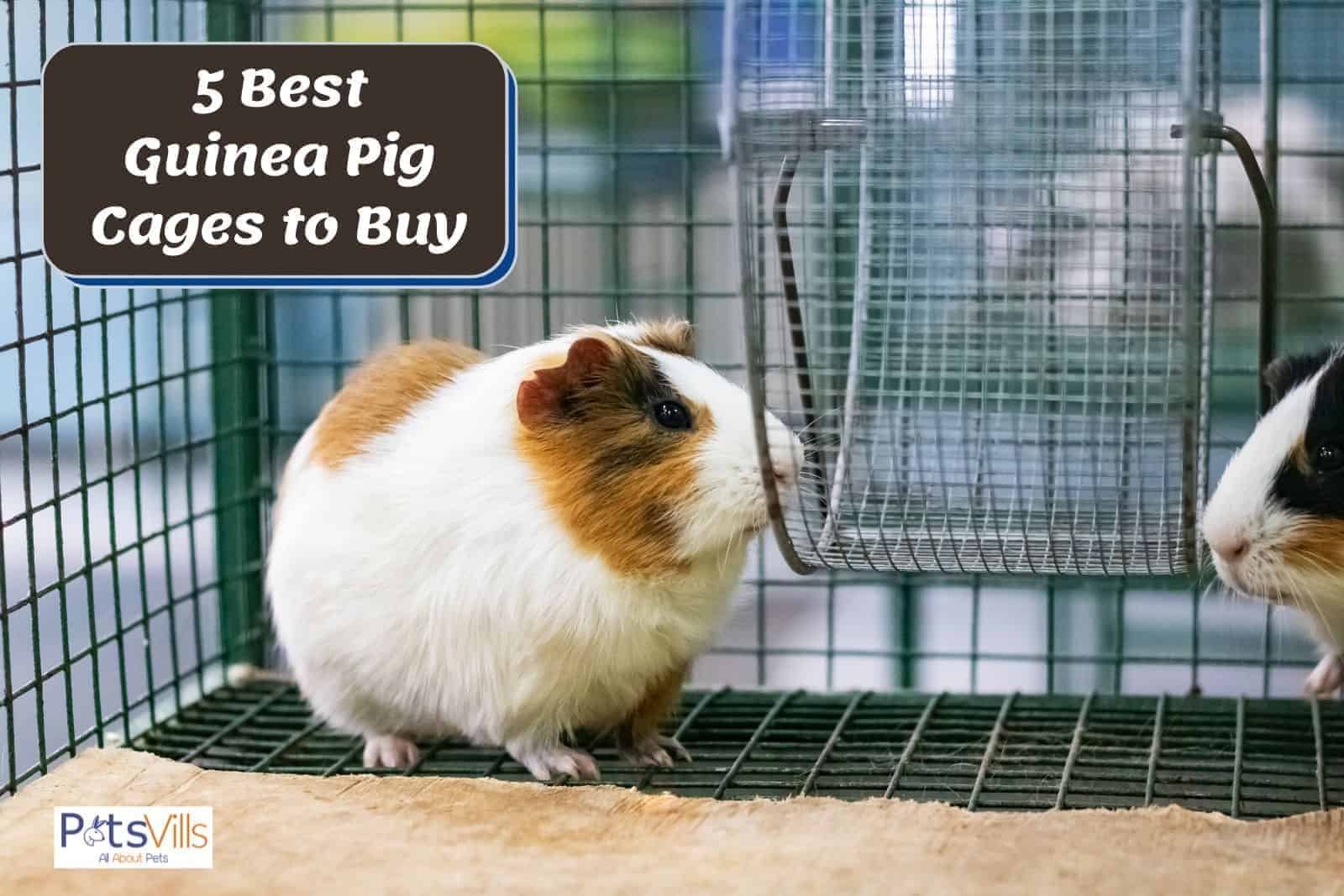Let’s continue our cavy conversation by talking about the best guinea pig cages to buy or DIY.
Here’s a hint- you have to dig a little deeper than the first page of results on Amazon or other major pet retailers.
We’ll start by defining what counts as “the best” guinea pig cage and look at where to find them.
Then, we’ll take a look at some of my top picks for habitats to buy.
If you see the value in these products and choose to purchase via my referral links, I may earn a small commission at no extra cost to you.
Let’s start with a quick look at our top picks, then keep reading for all the glorious details.
Don’t miss our guide: 5 best outdoor guinea pig hutch
Table of Contents
Best Guinea Pig Cages at a Glance
- MIDWEST GUINEA PIG HABITAT PLUS – Lock in place ramps and doors to create separate “rooms”
- AMAZONBASICS CANVAS BOTTOM PET CAGE WITH DIVIDER SET – Leak-proof
- ROCKEVER TORTOISE HOUSE HABITAT – Made of solid wood and metal
- GUINEA PIG CAGES STORE LARGE GRID HABITAT – Super easy to assemble
- TUCKER MURPHY GUINEA PIG HUTCH – Roomy enough for multiple pigs
Check the table below for a side-by-side comparison of our favorites!
Table could not be displayed.Top 5 Best Guinea Pig Habitats to Buy
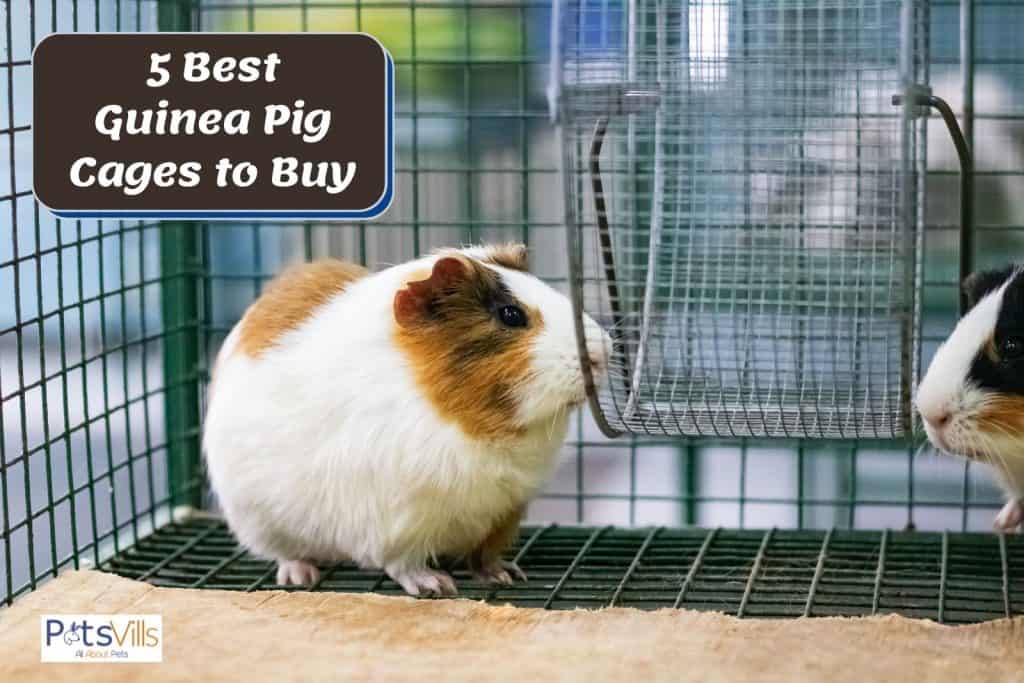
Finding the best guinea pig cages is more challenging than you may think, especially if you’re just sticking with the top results on major retailers. Most are way too small!
That said, there are a few on Amazon that is suitable, at least as starter habitats. With a bit of struggling, I found three that I am comfortable recommending.
However, if you want the best of the best, check out #4 and #5.
1. Midwest Guinea Pig Habitat Plus
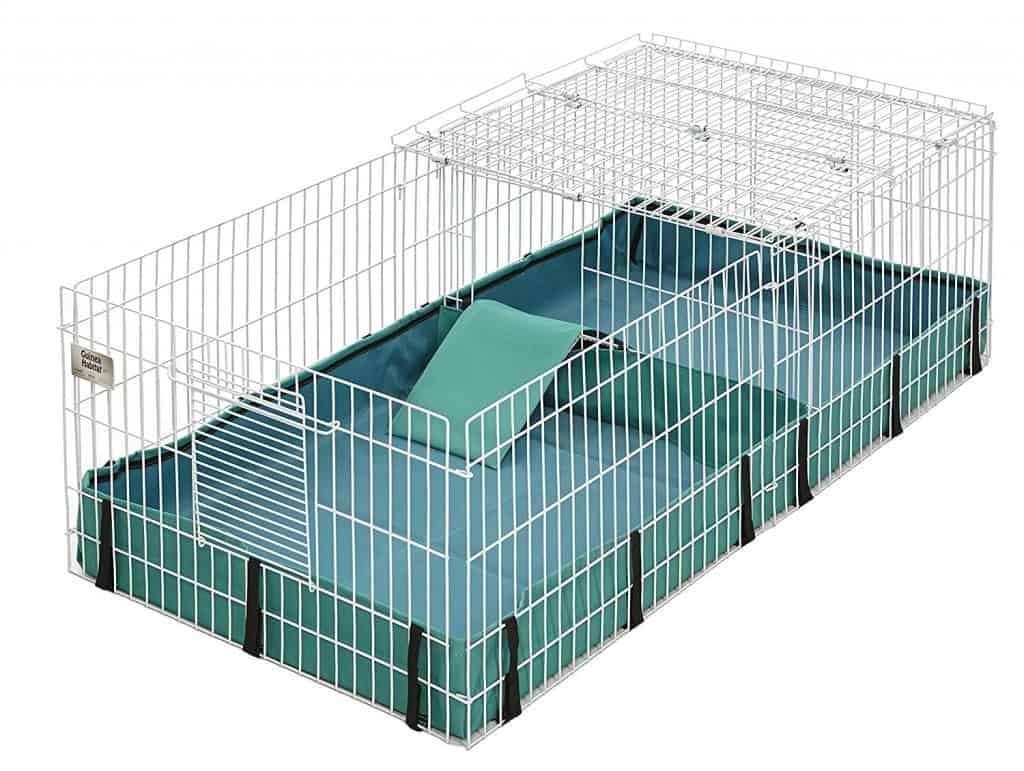
The Midwest guinea pig habitat is the highest rated on Amazon, but how does it measure up? Let’s look at the pros and cons to see.
Features & Benefits of Midwest Guinea Pig Habitat Plus
- Measures 47 x 24 x 14 inches, providing 8 square feet total.
- Removable wire mesh top that folds back for easy spot cleaning.
- Lock in place ramps and doors to create separate “rooms”
- Removable PVC-lined canvas bottom.
- Leak-proof
- Easy to wash
- No tools needed for assembling
- Includes 1 Year Manufacturer’s Warranty
Drawbacks of Midwest Guinea Pig Habitat Plus
- Not big enough for more than one cavy
- Not very durable in the long run
- Customers complain that the liner smells funny
- Others complain that it’s actually a pain to clean
Recommendation
Honestly, I’m not super passionate about any of the habitats on mass retailers like Amazon.
However, if you need something right away and have your heart set on buying through Amazon, this is probably your best option.
2. AmazonBasics Canvas Bottom Pet Cage with Divider Set
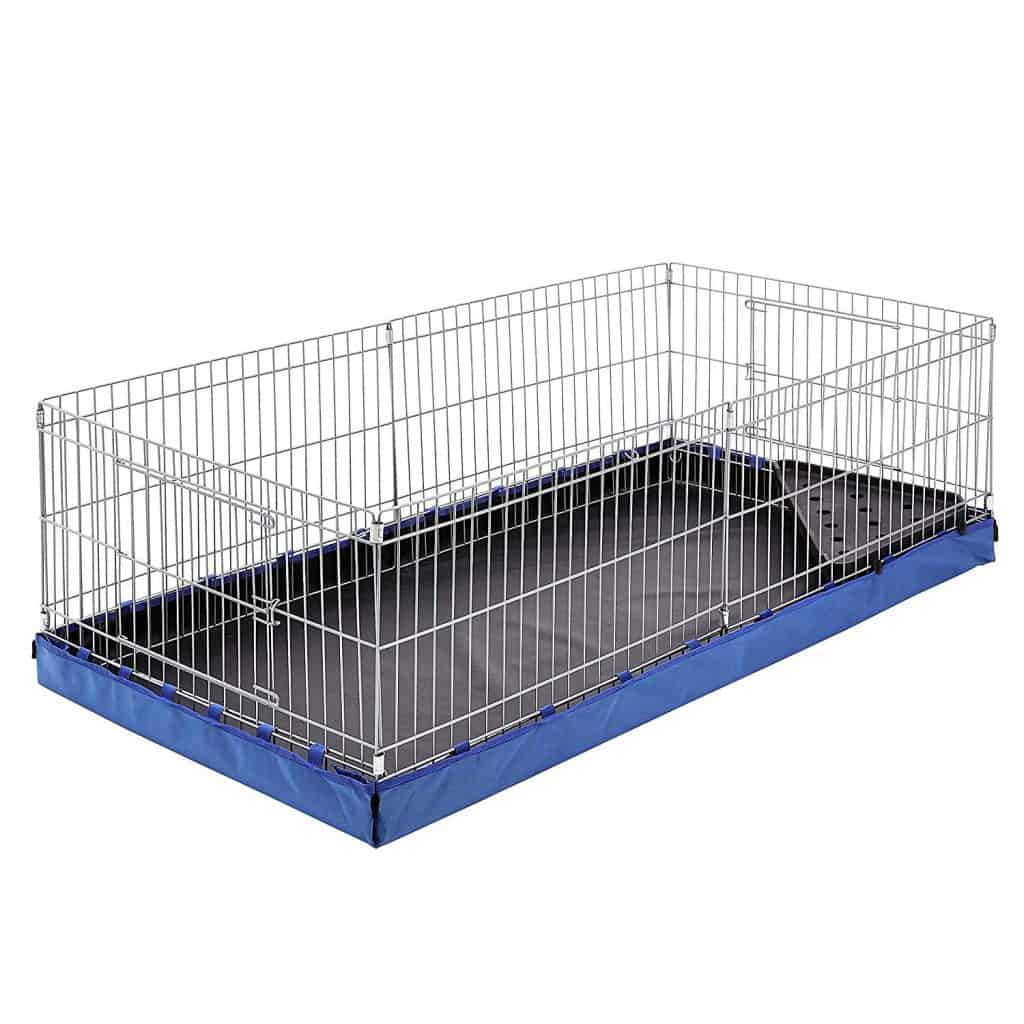
If you need something right this moment and you’re planning to upgrade ASAP, the AmazonBasics model will do.
Features & Benefits of AmazonBasics Canvas Bottom Pet Cage with Divider Set
- Measures 46.6 x 13.8 x 23.6 inches (according to the description)
- Includes a canvas bottom in your choice of blue or black.
- Made with iron wire frame to keep your cavy secure.
- Canvas surface is textured to add traction.
- Leak-proof
Drawbacks of AmazonBasics Canvas Bottom Pet Cage with Divider Set
- No lid, which is fine if you don’t have other pets. Not so much if you do!
- Too small for more than one cavy
- A challenge to put together (as one customer with arthritis explained, it’s literally a pain)
- Not that durable
Recommendation
While it’s not among the best guinea pig cages ever, it’s among the best on Amazon. Sadly, that’s not saying much.
It’s okay as a temporary solution OR if you have a larger habitat and need a backup. For example, a place to put your cavies when you’re cleaning out their main home.
3. ROCKEVER Tortoise House Habitat

Wait, what? A tortoise habitat? Don’t worry, I haven’t gone mad!
As far as good habitats on Amazon go, I actually like this one better than those made for cavies!
Features & Benefits of ROCKEVER Tortoise House Habitat
- Living space measures 40″x36″x14″
- Durable grate and latch.
- Made of solid wood and metal.
- Easy to assemble with just a screw driver.
- Includes a hut for your piggy’s privacy needs.
- Removable floor in the hut part.
Drawbacks of ROCKEVER Tortoise House Habitat
- No base in the run, so you’ll need to make some modifications for indoor use.
- The wood base in the hut isn’t leakproof.
Recommendation
With a few modifications, this outdoor guinea pig cage actually works well as an indoor habitat. Of course, it’s also a fantastic option to use as an outdoor run.
4. Guinea Pig Cages Store Large Grid Habitat
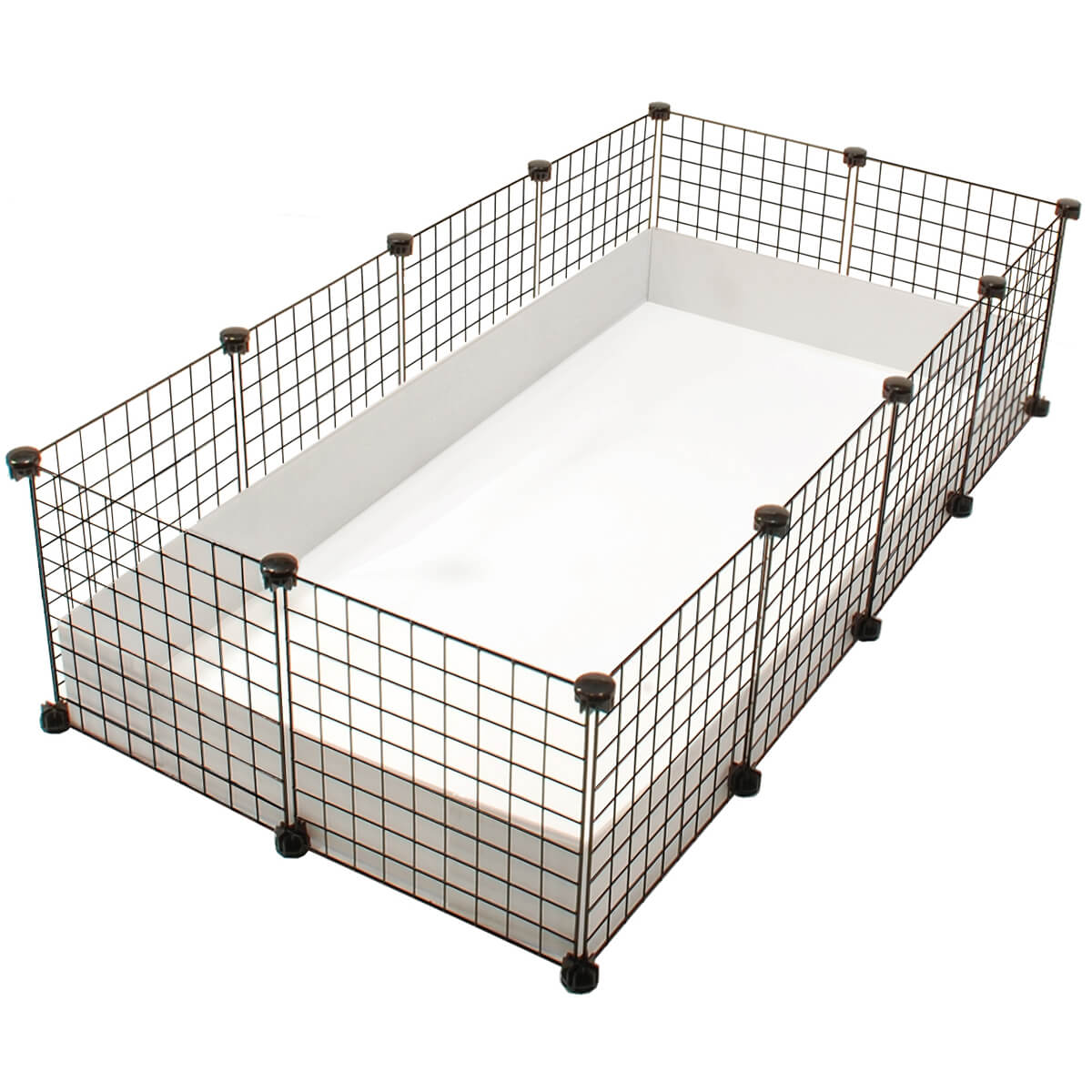
If you want the best guinea pig cages, you have to go to a store that specializes in them.
We bought ours from Guinea Pig Cages Store over 5 years ago and never once regretted it. We have this one.
Features & Benefits of Guinea Pig Cages Store Large Grid Habitat
- Designed for guinea pigs by a guinea pig lover
- Totally customizable and modular options
- Affordable, especially compared to less stellar options in pet stores.
- Made with coroplast base
- Easy to clean
- Comes in a ton of different colors
- Includes cable ties in coordinating colors to keep it together
- Super easy to assemble
Drawbacks of Guinea Pig Cages Store Large Grid Habitat
- Doesn’t ship free.
- Standard cages don’t come with a lid. You can add one (we did), but they are a bit price compared to the cost of one without a lid.
Recommendation
While we’d love you to buy a habitat through Amazon so we can get the affiliate commission, I can’t lie to you. THIS is your best bet. Hands down, no competition.
5. Tucker Murphy Guinea Pig Hutch
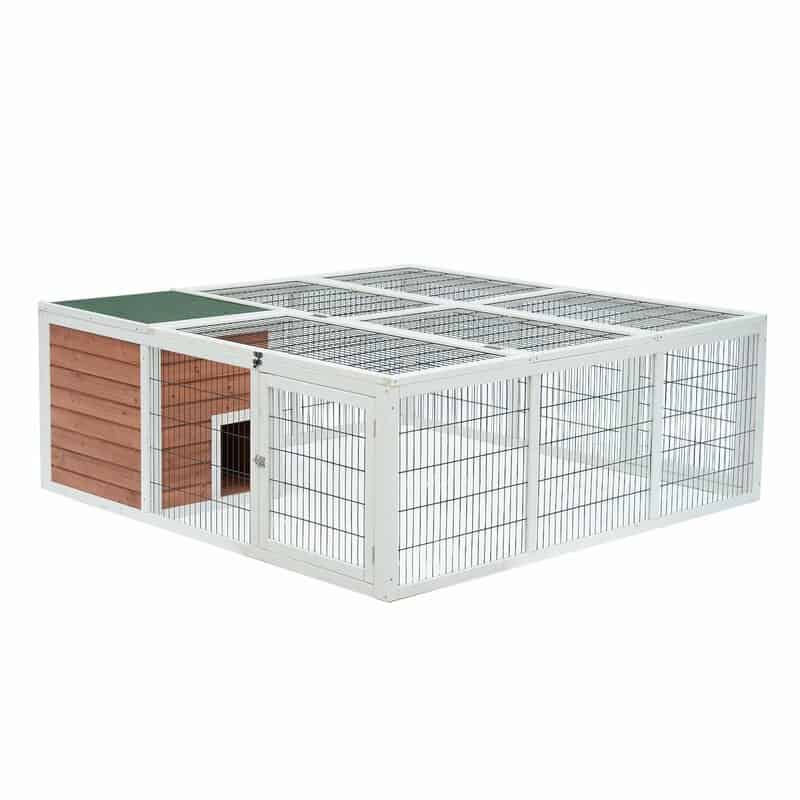
If you prefer to shop through Wayfair, I recommend the Tucker Murphy Germania Hutch.
While it’s made for outdoor use, with a few simple modifications it becomes a great indoor habitat.
Features & Benefits of Tucker Murphy Guinea Pig Hutch
- Measures 63x63x24″
- Roomy enough for multiple pigs
- Includes a little hideaway room for your piggies.
- Made with all-weather resistant material (which is good to know even if you’ll use it inside)
- Made mostly of solid wood
- Removable top for easier cleaning
Drawbacks of Tucker Murphy Guinea Pig Hutch
- It’s huge, so you’ll basically need a whole room dedicated to your cavies!
- A bit tall, which makes it harder to clean
- No base
Recommendation
You’ll need to add some sort of base to use this indoors. I also recommend setting it up on the floor so it’s easier to reach into and clean.
However, it’s a unique option with plenty of space for multiple piggies.
CHECK MORE: Guinea Pig Exercise Pens
What to look for in the best guinea pig cages
First, stop thinking of it as a cage and start thinking of it as a habitat.
A cage is for containment and confinement. A habitat, on the other hand, is a sanctuary. A home.
It may feel like I’m arguing semantics, but you’ll actually find more appropriate domiciles by looking for “best guinea pig habitats” than by searching “best guinea pig cages.”
As for what to look for, here are some guidelines.
Size
When it comes to the best guinea pig habitats, size matters.
As Squeaks & Nibbles explains, single cavies need about 7 square feet of space. A 42×24″ habitat with a height between 12-18″ should suffice.
If you have two piggies, you’ll need to add about an extra 2-4 square feet. Our habitat is about 55″ long by 30″ wide, give or take.
Keep in mind that these are minimum sizes. If you have space for something larger, go for it. This is one time where bigger is definitely better.
Ventilation
You’ll also want to choose a habitat that has good ventilation. It goes without saying, but cavies need to breathe, too!
Our habitat is made of wire panels, so it offers good ventilation on all sides (except the bottom).
If you opt for a glass cage (or anything else with solid sides), you’ll need to leave the top open. Don’t worry, cavies won’t jump out of their habitats.
Solid base
While the sides and top can be made with many different materials, it’s important to stick with a solid base.
Little cavy feet can get caught in wire mesh! So, even if you’re covering it with bedding, opt for solid smooth plastic or glass.
Location
Where you put your cavy habitat is just as important as the type that you buy.
Guinea pigs don’t deal well with extreme temperatures. They’re susceptible to both chills and overheating.
Choose a dry spot that’s far away from drafts or heaters, then select a good-sized habitat that fits into that spot.
It’s better to put a small habitat with multiple levels in an ideal location than a giant habitat in a spot that’s too hot, cold, or damp.
If you do opt for a multilevel habitat, make sure it includes ramps to get to each level. Remember, cavies don’t jump.
Easy to clean
Whatever you choose, make sure you’re comfortable cleaning your guinea pigs cage.
Guinea pigs are messy little beings! You’ll need to spot clean daily and deep clean weekly.
Stick with something around 12-18″ tall that you can easily reach into. Trust me, if you don’t, you’ll find yourself standing on ladders and hoping you don’t fall into their habitat!
Final Recommendation
Hands down, no contest, my top recommendation is the one from Guinea Pig Cages Store.
However, if you want to get something from Amazon, I’d go with the tortoise hut over the other options.
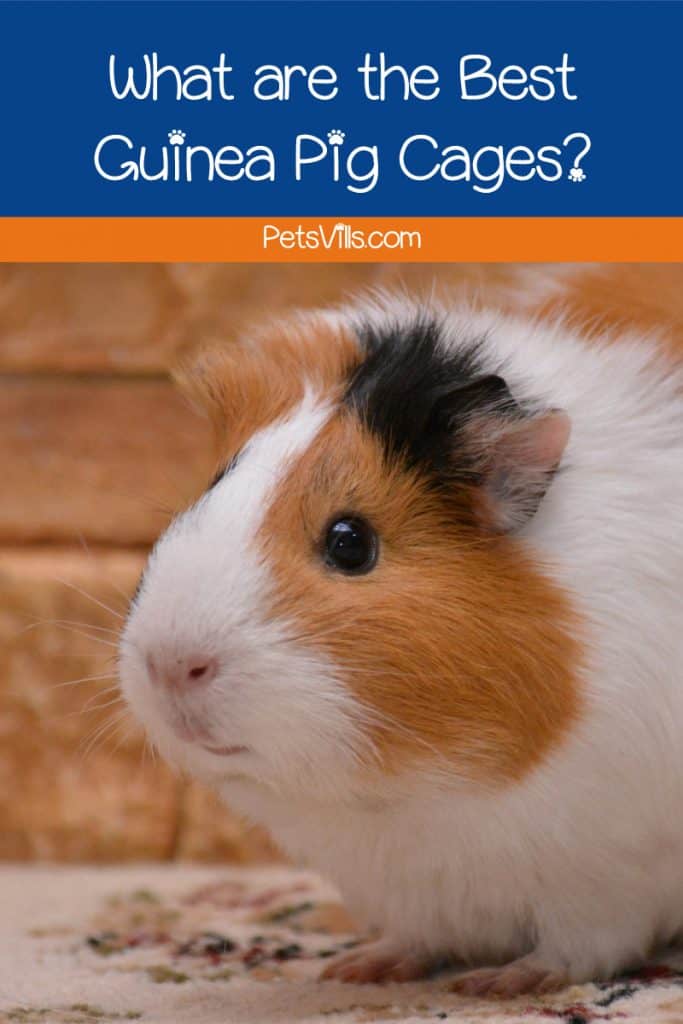
Do you have any other recommendations for the best guinea pig cages? Share below!

